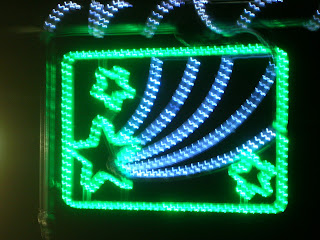Two and More to Pass By-
NEOs Approach/ SEP-OCT
Two Small Asteroids to Pass Close by Earth on September 8, 2010NASA/JPL Near-Earth Object Program Office
September 7, 2010
http://neo.jpl.nasa.gov/news/news169.html
Two asteroids, several meters in diameter and in unrelated orbits, will
pass within the Moon's distance of Earth on Wednesday, September 8th.
The Catalina Sky Survey near Tucson Arizona discovered both objects on
the morning of September 5 during their routine monitoring of the skies.
The Minor Planet Center in Cambridge Massachusetts first received the
observations Sunday morning, determined preliminary orbits and concluded
that both objects would pass within the distance of the Moon about three
days after their discovery. Near Earth asteroid 2010 RX30 is estimated
to be 10 to 20 meters in size and will pass within 0.6 lunar distances
of Earth (about 248,000 km) at 9:51 Greenwich standard time (5:51 am
EDT) Wednesday. The second object, 2010 RF12, estimated to be 6 to 14
meters in size will pass within 0.2 lunar distances (79,000 km) a few
hours later at 21:12 Greenwich standard time (5:12 pm EDT). Both objects
should be observable near closest approach with moderate sized amateur
telescopes. Although neither of these object has a chance of hitting
Earth, a ten meter-sized near-Earth asteroid from the undiscovered
population of about 50 million would be expected to pass almost daily
within a lunar distance, and one might strike Earth's atmosphere about
every ten years on average. -end-
http://neo.jpl.nasa.gov/news/news169.html
These two are estimated to pass at 0.6 LD and 0.2 LD ; close, but not a cigar yet. Bodies of smaller sizes will accompany them and some just may visit the Earth as a meteor(s) in the coming days and weeks. See Table below.
Visit http://neo.jpl.nasa.gov/ca/ for the most current and accurate information.1
AU = ~150 million kilometers
1 LD = Lunar Distance = ~384,000 kilometers
|
Object
Name | Close
Approach
Date | Miss
Distance
(AU) | Miss
Distance
(LD) | Estimated
Diameter* | H
(mag) | Relative
Velocity
(km/s) |
Source: NASA/JPL 2010 http://neo.jpl.nasa.gov/ca/
